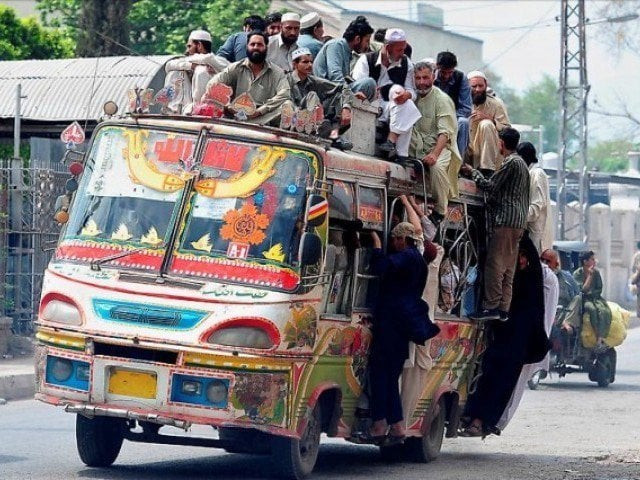Buses: A bitter battle for safety in public spaces
Women point out they need more seats, not segregated buses

PHOTO: AFP/FILE
“I wish I had my own car or any other way to reach my office,” Andaleeb, a receptionist at a bank in the city, told The Express Tribune. “I do not feel comfortable travelling in public transport as people stare at us from top to bottom.”
Women protection bill will cause divisions within families and increase divorce rate: JUI-F chief
It is not just the disconcerting gaze that makes public transport a suffocating space for women; it is the lack of physical space which makes the journey hard to bear. With mobility so indelibly linked with emancipation and empowerment, many women struggle with this question daily – is the ride worth it?
Shrinking space
The bus that Andaleeb boarded was in motion when a few women jumped in at Firdous Stop with the folds of their burqas gathered in one fist. Their gravity-defying acrobats, however, landed them in the middle of a sardine can. Leaning on whatever surface they could grab, the women started cursing at the conductor for signaling them to jump on even though it was overpopulated.
“Why don’t they tell us beforehand there is no space for us?” asked a woman. “We pay the fare, but still do not get seats – the few seats reserved for us are also taken over by men.”
The battle for space amid flying expletives and racing buses is not new. In every public transport—bus or wagon—there are very few seats reserved for women. And men do not hesitate to grab a seat – a coveted entity in the daily dash to the finish line. The battle is exacerbated by the fact that the number of seats “reserved” for women are not adequately representative of the number who actually travel.
Segregating the public
A bus service exclusively for women was launched in December 2008. The project was a joint venture of the transport and welfare department in the province. Its main purpose was to provide women with an alternative, encouraging them to become more mobile.

Two buses were launched, their route from Haji Camp to Hayatabad. The project came to a crashing halt in just two or three months.
All stakeholders consulted on women protection bill: Sufi
Whether the failure of this project was in a lack of marketing or lack of profitability, it became clear not all women demand segregation of public spaces. Shazma, a university student, is one of them. “We don’t need a separate vehicle, we just want [more] space in the same bus.”
Changing mindsets
Shazma added it was the duty of the government to solve this problem, especially for university students. “Because it gets very difficult to grab a seat. And when we do get a seat, it’s not like we can sit at ease with conductors and commuters harassing us by singing songs or commenting on our clothes.” But it seems like the government, including the social welfare and women development department, remain passive about the issue.
Khyber-Pakhtunkhwa Social Welfare Secretary Syed Abdul Jabbar Shah told The Express Tribune, “It is the responsibility of the transport department to [take initiative].”
However, Regional Transport Authority Director Manzoor Ahmed refused to talk on the issue. An official of the transport department said only two of such buses for women would not help. “At least 30 buses were needed to actually meet the demand.
Published in The Express Tribune, March 1st, 2016.













COMMENTS
Comments are moderated and generally will be posted if they are on-topic and not abusive.
For more information, please see our Comments FAQ